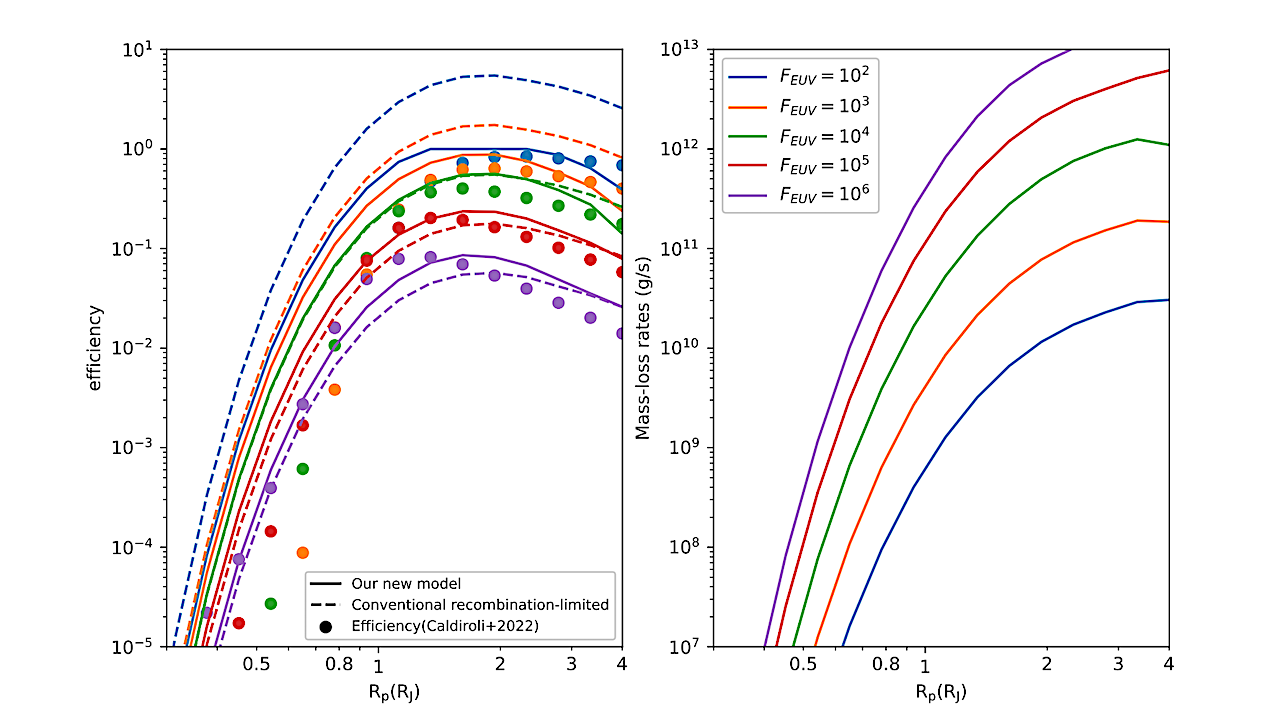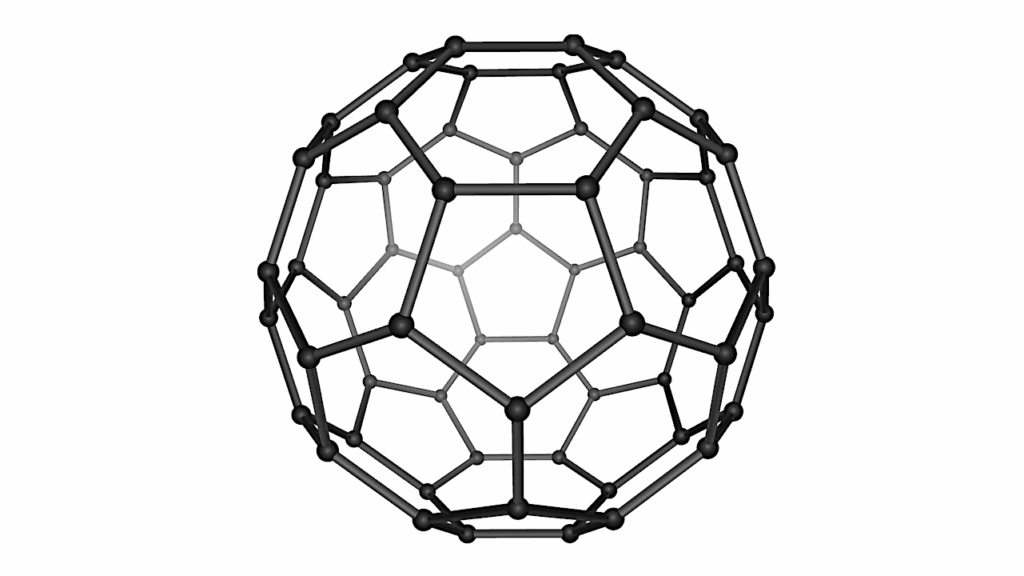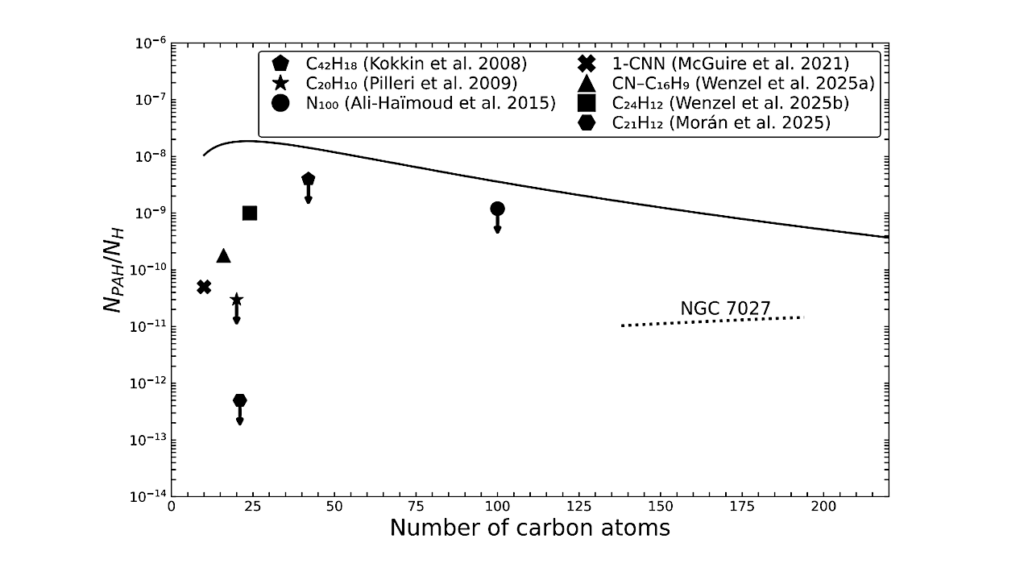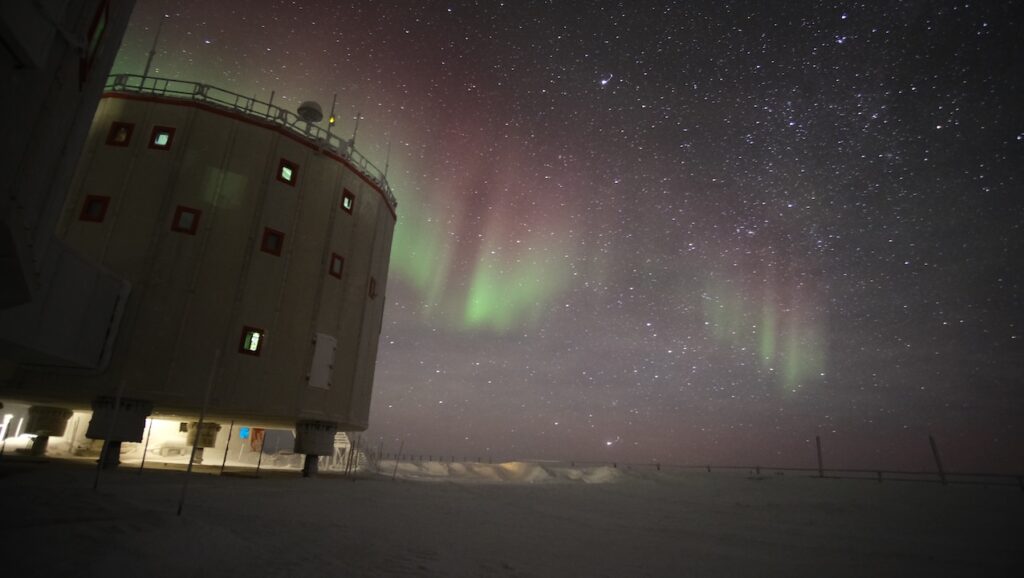Physically Motivated Analytic Model of Energy Efficiency for EUV-driven Atmospheric Escape of Close-in Exoplanets

Extreme Ultraviolet (EUV) driven atmospheric escape is a key process in the atmospheric evolution of close-in exoplanets.
In many evolutionary models, the energy-limited mass-loss rate with a constant efficiency (typically ∼10%) is assumed for calculating the mass-loss rate. However, hydrodynamic simulations have demonstrated that this efficiency depends on various stellar and planetary parameters. Comprehending the underlying physics of the efficiency is essential for understanding planetary atmospheric evolution and recent observations of the upper atmosphere of close-in exoplanets.
We introduce relevant temperatures and timescales derived from physical principles to elucidate the mass-loss process. Our analytical mass-loss model is based on phenomenology and consistent across a range of planetary parameters. We compare our mass-loss efficiency and the radiation hydrodynamic simulations. The model can predict efficiency in both energy-limited and recombination-limited regimes.
We further apply our model to exoplanets observed with hydrogen absorption (Lyα and Hα). Our findings suggest that Lyα absorption is detectable in planets subjected to intermediate EUV flux; under these conditions, the escaping outflow is insufficient in low-EUV environments, while the photoionization timescale remains short in high-EUV ranges.
Conversely, Hα absorption is detectable under high EUV flux conditions, facilitated by the intense Lyα flux exciting hydrogen atoms. According to our model, the non-detection of neutral hydrogen can be explained by a low mass-loss rate and is not necessarily due to stellar wind confinement or the absence of a hydrogen-dominated atmosphere in many cases. This model assists in identifying future observational targets and explicates the unusual absorption detection/non-detection patterns observed in recent studies.
Hiroto Mitani, Riouhei Nakatani, Rolf Kuiper
Comments: 12 pages, 8 figures, 2 tables, accepted for publication in A&A
Subjects: Earth and Planetary Astrophysics (astro-ph.EP)
Cite as: arXiv:2502.08398 [astro-ph.EP] (or arXiv:2502.08398v1 [astro-ph.EP] for this version)
https://doi.org/10.48550/arXiv.2502.08398
Focus to learn more
Submission history
From: Hiroto Mitani
[v1] Wed, 12 Feb 2025 13:41:40 UTC (744 KB)
https://arxiv.org/abs/2502.08398
Astrobiology,








